ICV: Global Quantum Computing Cloud Platform Research Report
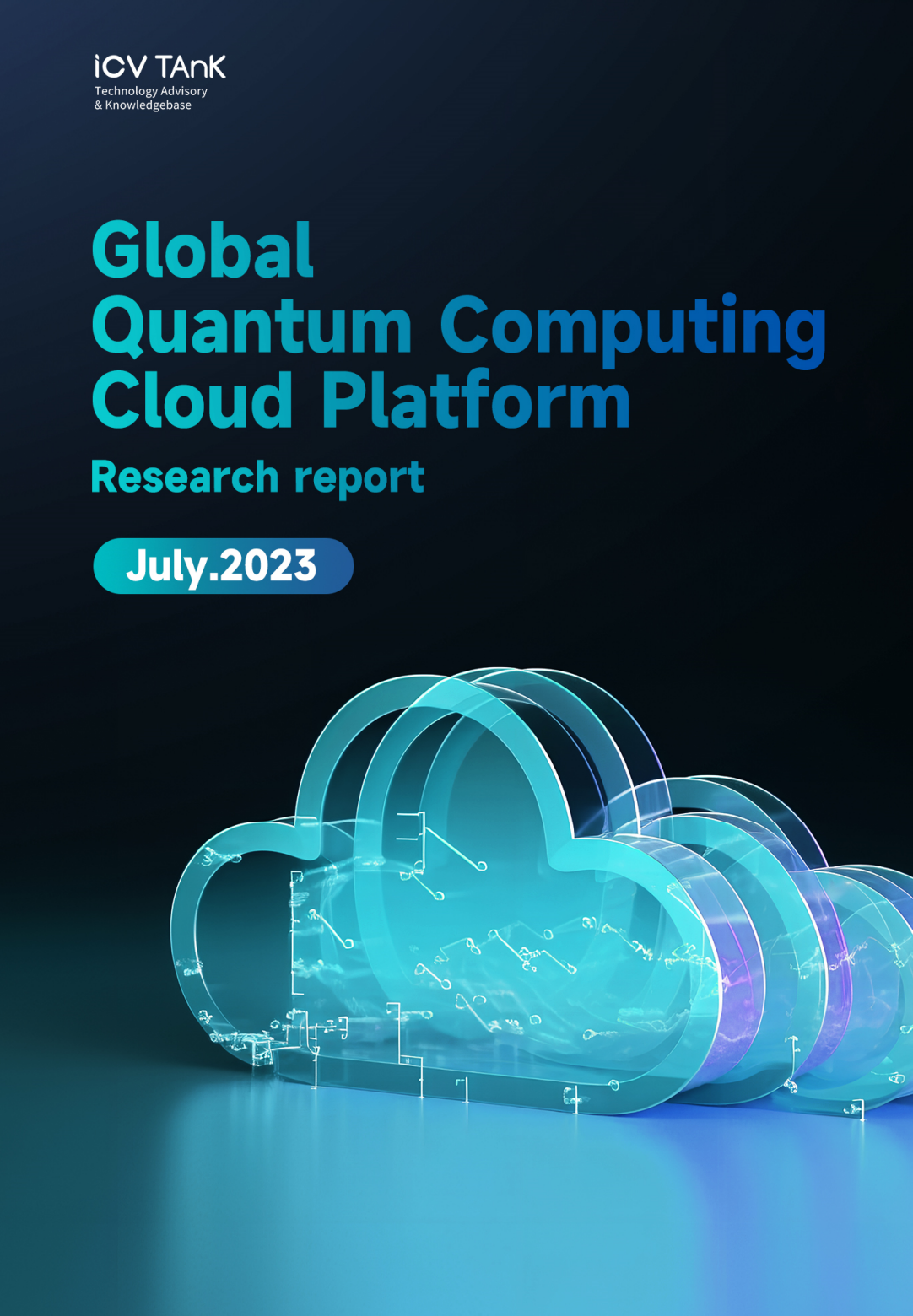
Quantum computing, with its extraordinary computational abilities, is widely regarded by both the academic and industrial communities as a key to unlocking the potential for enhanced computing power. In recent years, quantum computing cloud platforms have played an increasingly vital role as significant bridges in realizing the commercialization and popularization of quantum computing. These platforms not only provide users with convenient access to quantum computing resources but also facilitate the development and optimization of quantum algorithms, presenting both opportunities and challenges for the academic and industrial spheres.
This report is divided into five chapters. The first chapter provides an overview of quantum computing cloud platforms and explores their advantages in scientific research and commercial domains. The second chapter focuses on the development and features of quantum computing cloud platforms in the first half of 2023, detailing the latest progress made in the industry during this period. The third chapter primarily investigates the global leading companies and products in the development of quantum computing cloud platforms, with case studies including IBM Q Experience, Amazon Braket, Microsoft Azure, and QuantumCTek, and outlines their cloud platform upgrade and developmental trajectories. The fourth chapter concentrates on testing and evaluation, with special attention to processor types and performance, user interface usability, pricing structures, technical and community support, scalability, and future developments. The fifth chapter offers a summary and outlook on the global quantum computing cloud platform industry, discussing future trends, including the emergence of more quantum computing service providers, realization of quantum advantage, development of hybrid quantum and classical computing models, increased cross-disciplinary collaboration, growth in quantum computing education and training, and the introduction of more robust and user-friendly quantum programming tools.
Through this report, we aim to provide readers with a comprehensive understanding, enabling them to better grasp the importance of quantum computing cloud platforms and their potential impact on the future of computing. We believe that this report will offer valuable insights for scientists, engineers, and entrepreneurs and contribute to the advancement of quantum computing cloud platform development.
Due to the demanding operational requirements and high acquisition and maintenance costs of quantum computers, it has become challenging for ordinary users to afford purchasing and utilizing a quantum computer. However, the emergence of quantum cloud platforms addresses this issue. With quantum cloud platforms, users can upload their developed quantum programs to the backend quantum computer or quantum virtual machines for computational processing and obtain results. This solution allows users to access quantum computing capabilities without the need for expensive hardware and maintenance, making it more accessible and cost-effective for a broader audience.
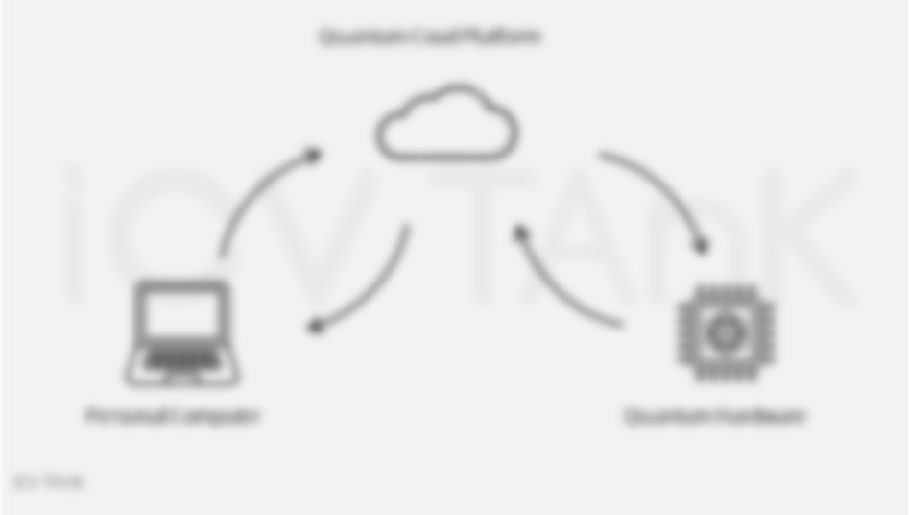
Based on the differences in the regions of operation, we conducted an analysis of quantum computing cloud platforms for eight companies in North America, five companies in Europe, and six companies in Asia. The analysis encompassed various dimensions, including the release date of the platforms, hardware technology providers, backend hardware accessibility, and the number of accessible qubits (qubits).
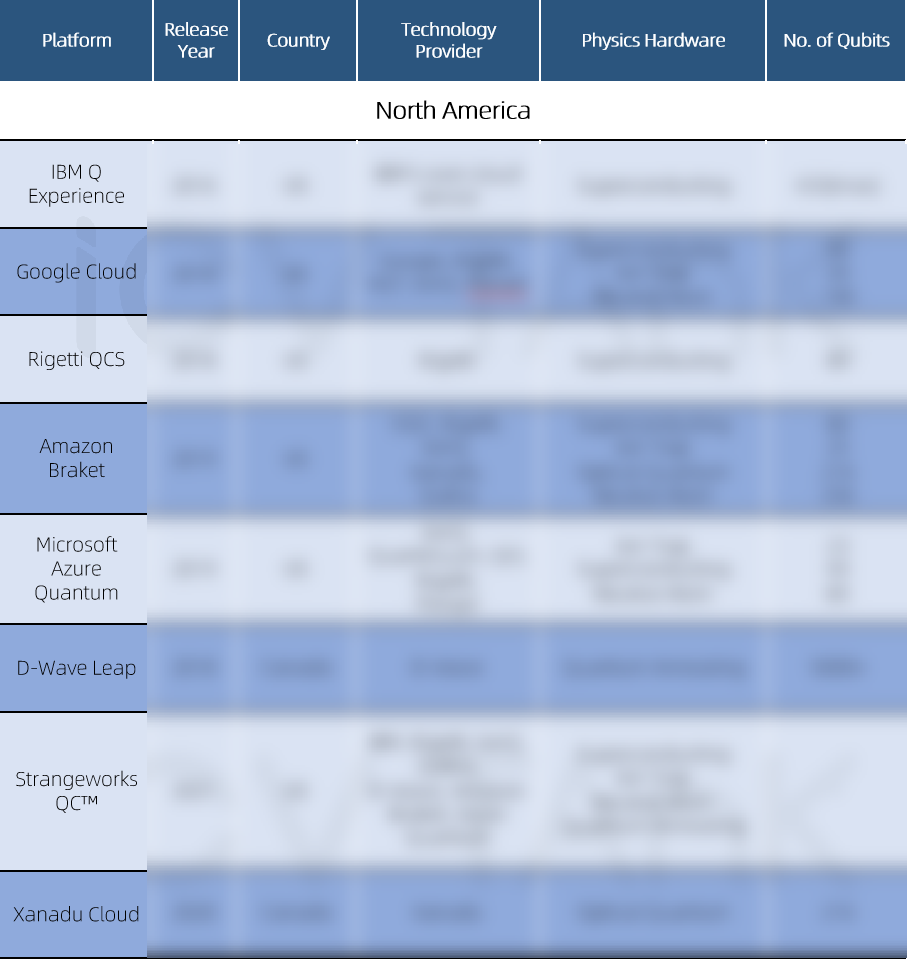
In the first half of 2023, several companies made significant advancements in the development of quantum computing cloud platforms. In January, IBM announced the launch of their 433-qubit processor, Osprey, on their quantum cloud platform, which also provided access to a 5000-qubit quantum simulator. In May, the Beijing Institute of Quantum Information Science introduced the Quafu Quantum Computing Cloud Platform, offering 136 interconnected and independently controllable qubits. Additionally, in May, QuantumCTek unveiled its quantum computing cloud platform, granting users access to 176 qubits (66 qubits and 110 coupling bits). In June, Strangework announced the integration of IBM's 127-qubit Eagle processor into their cloud platform, offering a pay-as-you-go system for quantum services.

Table of Contents
I. Introduction
1. Overview of Quantum Computing Cloud Platform
2. Necessity of Quantum Computing Cloud Platform
3. Comparison of Different Quantum Computing Cloud Platform Products
II. Progress
1. Overview of Quantum Computing Cloud Platform Development
2. Features of Quantum Computing Cloud Platform Development
III. Participant
1. Global Distribution of Quantum Computing Cloud Platforms
2. IBM Q Experience Introduction
3. Amazon Braket Introduction
4. Microsoft Azure Introduction
5. QuantumCTek Quantum Computing Cloud Platform Introduction
IV. Test & Evaluation
1. Evaluation of Backend Hardware Performance
2. Assessment of Interface Ease-of-Use
3. Analysis of Pricing Structure
4. Review of Technical and Community Support
5. Assessment of Scalability and Future Development
V. Outlook
1. Emergence of More Quantum Computing Service Providers
2. Achievement of Quantum Advantage
3. Development of Hybrid Quantum and Classical Computing Models
4. Expansion of Interdisciplinary Collaboration
5. Enhancement of in Quantum Computing Education and Training
6. Improvement in Quantum Programming Tools
Appendix
Reference Links
List of Figures
Figure 1: Workflow of quantum computing cloud platform
Figure 2: Comparison of quantum computing cloud platform
Figure 3: Major progress in quantum computing platforms in 1H 2023
Figure 4: Commercial use cases of quantum computing cloud platforms
Figure 5: Main institutions Involved in the global quantum computing cloud platform
Figure 6: Workflow of IBM Q Experience
Figure 7: Workflow of Amazon Braket
Figure 8: Workflow of Microsoft Azure Quantum
Figure 9: Workflow of QuantumCTek QC Cloud Platform
Figure 10: Hardware parameters of IBM Q Experience backend
Figure 11: Hardware parameters of IonQ on Microsoft Azure Quantum backend
Figure 12: Hardware parameters of Quantinuum on Microsoft Azure Quantum backend
Figure 13: Hardware parameters of Rigetti on Microsoft Azure Quantum backend
Figure 14: Backend of Microsoft Azure Quantum-An ion trap mounted inside IonQ QPU
Figure 15: Backend of Microsoft Azure Quantum-An architecture of Rigetti’s Aspen-M processor
Figure 16: Hardware parameters of Rigetti on Amazon Braket backend
Figure 17: Backend of Amazon Braket backend-An architecture of QuEra’s Aquila processor
Figure 18: Hardware parameters of QuantumCTek on QuantumCTek QC Cloud Platform backend
Figure 19: Comparison of interface ease-of-use between different quantum cloud platforms
Figure 20: Example of quantum cloud platform operator interface for IBM Q Experience
Figure 21: Example of quantum cloud platform operator interface for Microsoft Azure Quantum
Figure 22: Example of quantum cloud platform operator interface for Amazon Braket
Figure 23: Example of quantum cloud platform operator interface for QuantumCTek
Figure 24: Quantum cloud platform pricing for IBM Q Experience
Figure 25: Quantum cloud platform pricing for Microsoft Azure Quantum
Figure 26: Quantum cloud platform pricing for Amazon Braket (simulator)
Figure 27: Quantum cloud platform pricing for Amazon Braket (real processor)
Figure 28: Quantum cloud platform pricing for QuantumCTek QC Cloud Platform (not VIP)
Figure 29: Technical and community support across each quantum cloud platforms
Figure 30: Cloud platform backend hardware provider IBM's scalability and future growth
Figure 31: Cloud platform backend hardware provider Rigetti 's scalability and future growth
Figure 32: Cloud platform backend hardware provider IonQ‘s scalability and future growth
Figure 33: Cloud platform backend hardware provider Quantinuum‘s scalability and future growth
Figure 34: Cloud platform backend hardware provider QuantumCTek‘s scalability and future growth
Figure 35: Comprehensive evaluation of quantum cloud platforms
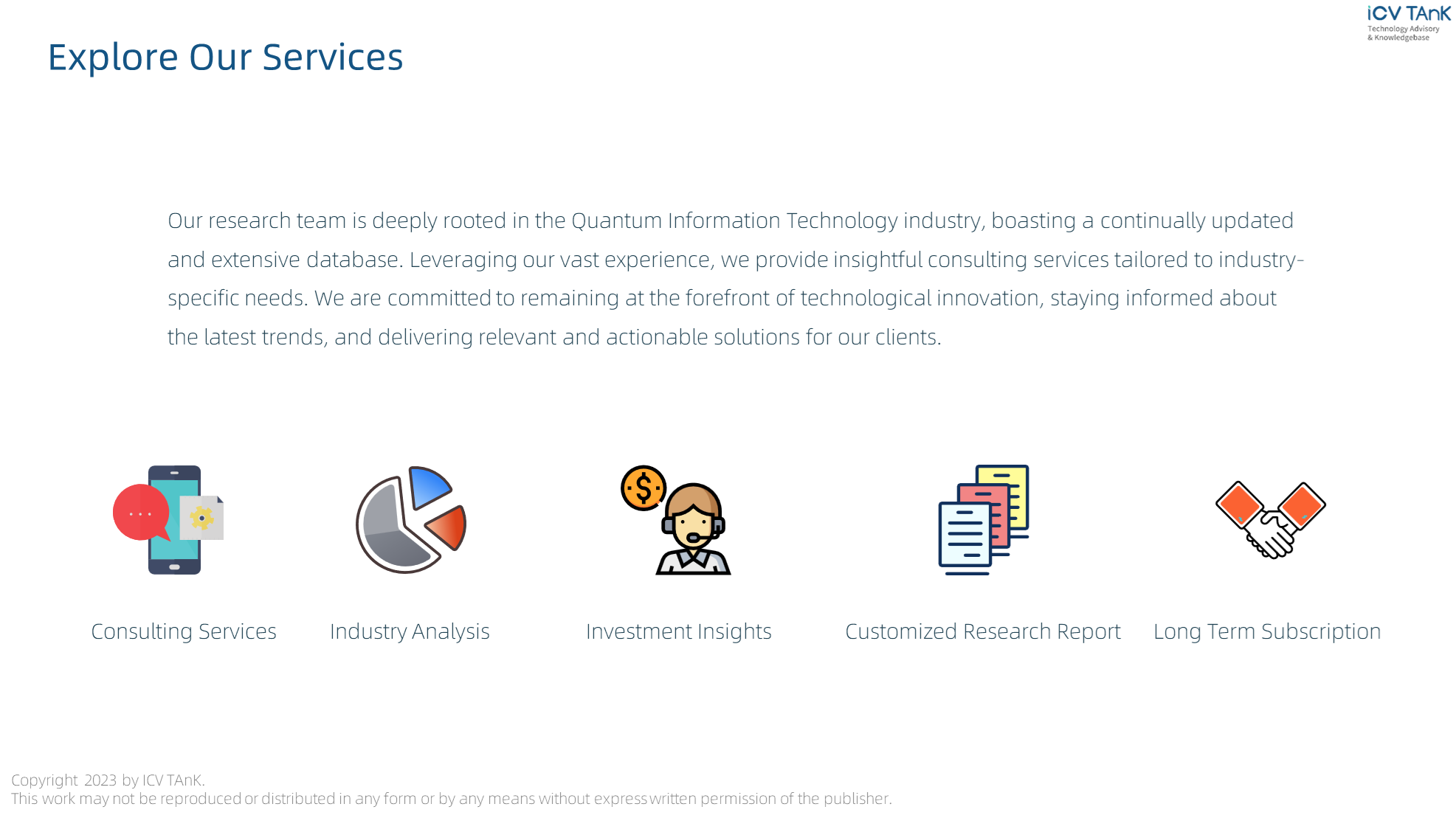
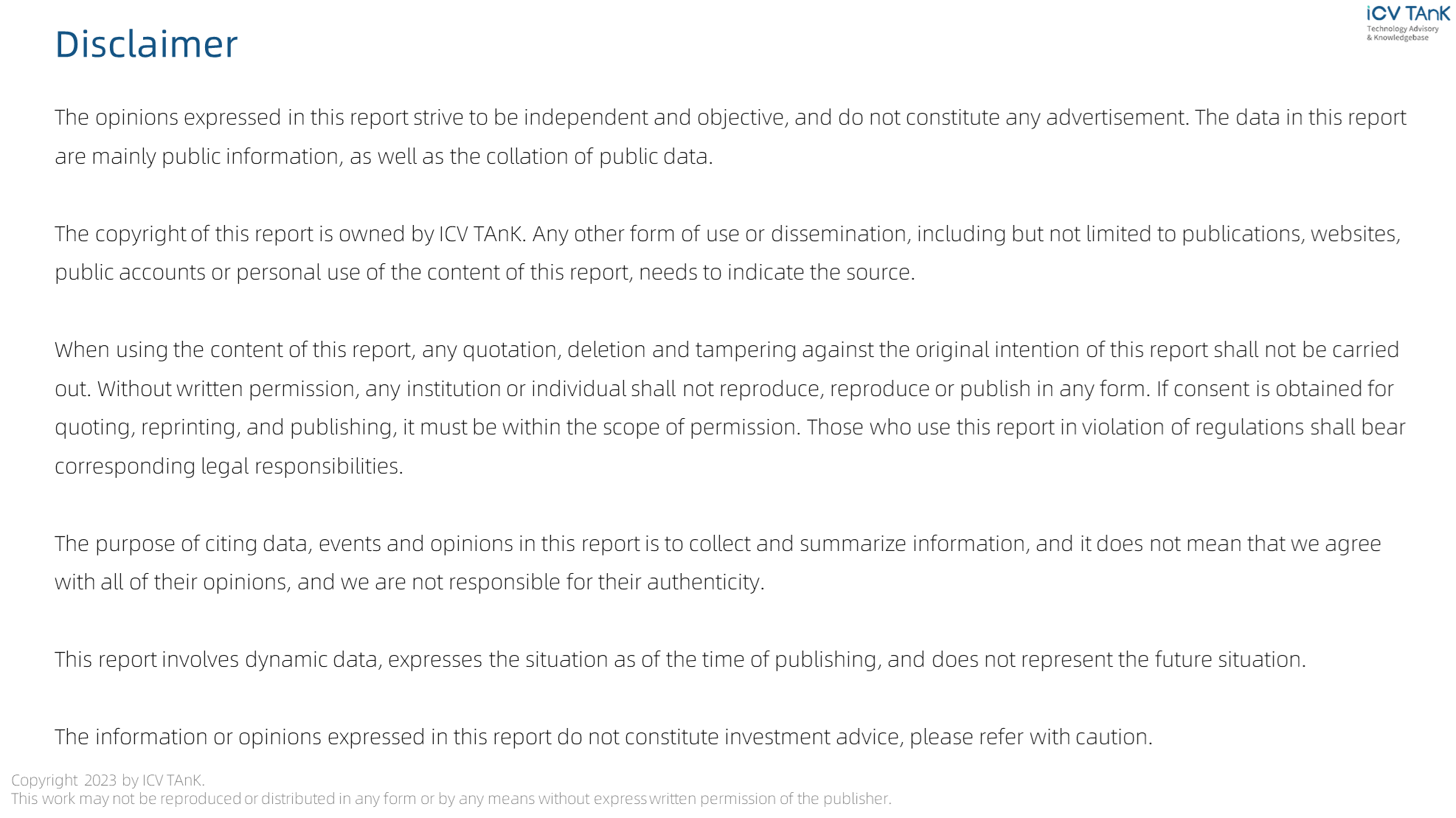

Report Sample Link:ICV: Global Quantum Computing Cloud Platform Research Report
Comments